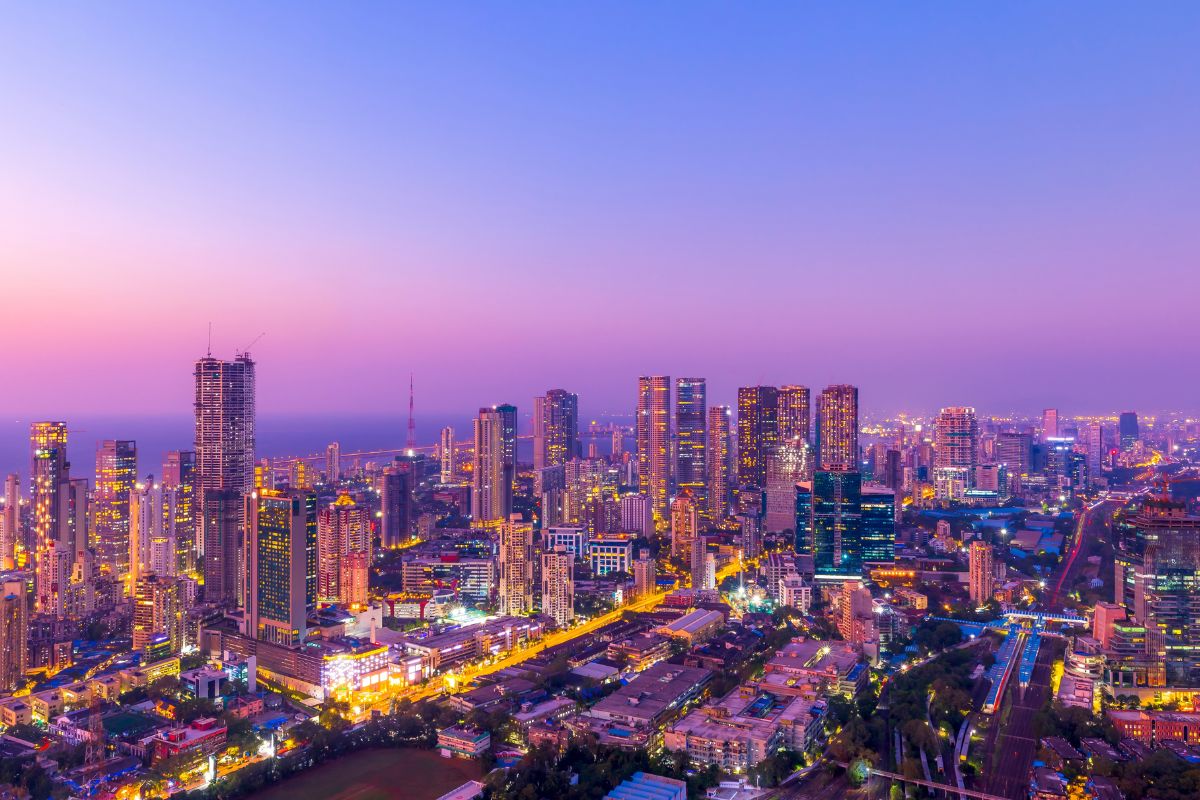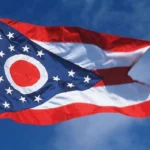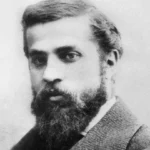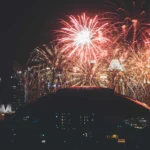
fun and unusual things to do in Mumbai
Nestled along the Arabian Sea, Mumbai, the bustling metropolis formerly known as Bombay, is not just India’s financial capital but a city pulsating with life, diversity, and historical richness. From its origins as a cluster of islands to the iconic landmarks that shape its skyline, Mumbai is a tapestry woven with stories of resilience, innovation, and cultural vibrancy. Join us on a journey through 25 historical facts and numerical trivia, where we unravel the layers of Mumbai’s past and present, exploring its architectural marvels, cultural milestones, and the indomitable spirit that defines the City of Dreams.
Origins of Mumbai: Mumbai’s origin story is a tale of transformation from a series of seven islands into the vibrant metropolis we know today. In the 18th century, the British East India Company initiated extensive land reclamation projects, uniting the islands and laying the groundwork for Mumbai’s expansion. This historical undertaking reshaped the city’s geography, enabling its evolution into a major port and commercial hub.
Gateway of India Construction: The Gateway of India, standing majestically along Mumbai’s waterfront, is more than a monumental arch; it encapsulates the historical resonance of the city. Commissioned to commemorate the visit of King George V and Queen Mary in 1911, the construction of the Gateway spanned over a decade, culminating in its completion in 1924. This iconic structure has since become synonymous with Mumbai’s identity, a symbol of historical significance and architectural splendor.
Chhatrapati Shivaji Terminus (CST): The Chhatrapati Shivaji Terminus, a testament to Mumbai’s rich railway heritage, stands as a masterpiece of Victorian Gothic architecture. Originally known as Victoria Terminus, its construction was completed in 1888. The intricately designed edifice not only serves as a vital transportation hub but also narrates the story of Mumbai’s colonial-era aspirations and its emergence as a commercial powerhouse.
Population Density: Mumbai’s meteoric rise as a global financial center is mirrored by its remarkable population density, making it one of the most densely populated cities on Earth. With over 20,000 people per square kilometer, the city pulsates with an energy and diversity that define its character. The challenges posed by such density underscore the resilience and adaptability of Mumbai’s residents.
Dharavi – Asia’s Largest Slum: Dharavi, often referred to as the heart of Mumbai, embodies a paradoxical blend of challenges and resilience. Asia’s largest slum, it is a bustling microcosm of small-scale industries and vibrant communities. Dharavi’s existence challenges stereotypes, offering a nuanced perspective on urban life and the strength inherent in the face of adversity.
Film Industry Hub: Mumbai’s association with Bollywood, the world’s largest film industry, traces back to 1913 with the release of “Raja Harishchandra,” India’s first feature film. Over the years, Bollywood has grown into a cultural phenomenon, shaping not just the city’s identity but also influencing global cinema trends. Mumbai’s film industry is a testament to the power of storytelling and the artistic expression that defines the soul of the city.
Mumbai Stock Exchange (BSE): The Bombay Stock Exchange (BSE), established in 1875, occupies a pivotal role in Mumbai’s financial landscape. As one of the oldest stock exchanges in Asia, the BSE has been a crucial player in India’s economic development. Its historic significance lies not just in the financial transactions it facilitates but also in the broader impact on the nation’s capital market.
Elephanta Caves: Nestled on Elephanta Island, the Elephanta Caves are a testament to Mumbai’s rich cultural and historical heritage. Carved between the 5th and 8th centuries, these rock-cut caves showcase exquisite sculptures and artistry, providing a glimpse into India’s ancient religious and artistic traditions. Designated as a UNESCO World Heritage Site, the Elephanta Caves are a testament to the enduring legacy of Mumbai’s cultural tapestry.
Marine Drive – Queen’s Necklace: The graceful arc of Marine Drive, often referred to as the Queen’s Necklace, stands as an emblem of Mumbai’s coastal allure. Stretching along the Arabian Sea, this 3.6 km boulevard captures the city’s romantic charm, with lights along its curve resembling a necklace at night. Beyond its aesthetic appeal, Marine Drive serves as a popular destination for locals and visitors alike, offering a serene retreat amidst the urban bustle.
Juhu Beach: Juhu Beach, with its golden sands and bustling atmosphere, is a cultural and recreational nucleus of Mumbai. Beyond being a picturesque shoreline, Juhu Beach reflects Mumbai’s social fabric, hosting a vibrant mix of locals and tourists. From leisurely strolls to enjoying street food, the beach embodies the city’s spirit of inclusivity and the seamless integration of tradition and modernity.
Mumbai Metro: The Mumbai Metro, introduced in 2014, represents a significant leap forward in the city’s efforts to address its perennial traffic woes. As a rapid transit system, it connects various parts of the city, providing a more efficient and time-saving alternative to road transport. This modern transportation initiative has not only eased the daily commute for millions but also symbolizes Mumbai’s commitment to embracing contemporary urban solutions in the face of its ever-expanding population.
Haji Ali Dargah: Situated on an islet in the Arabian Sea, the Haji Ali Dargah is a spiritual and architectural marvel dating back to 1431. The dargah holds religious significance for many, attracting pilgrims and visitors alike. Connected to the mainland by a causeway, the site exemplifies Mumbai’s cultural diversity and its ability to harmonize spiritual traditions within the dynamic fabric of the city.
Mumbai University: Founded in 1857, the University of Mumbai stands as a testament to the city’s commitment to education and intellectual pursuits. As one of the oldest universities in India, it has played a pivotal role in shaping the nation’s academic landscape. With a rich history and a diverse range of courses, Mumbai University continues to be a beacon of learning and knowledge dissemination.
Mumbai’s Victorian and Art Deco Ensemble: Recognized as a UNESCO World Heritage Site in 2018, Mumbai’s Victorian and Art Deco Ensemble encompasses a cluster of remarkable buildings, including the Bombay High Court and the Eros Cinema. This designation acknowledges the architectural diversity that defines Mumbai, showcasing its ability to seamlessly blend Victorian Gothic and Art Deco styles, each building narrating a chapter in the city’s history.
Largest Laundry Hub – Dhobi Ghat: Mahalaxmi Dhobi Ghat, the largest outdoor laundry area in the world, offers a unique glimpse into Mumbai’s daily life. Traditional washermen, or dhobis, manually wash and dry clothes in concrete wash pens, sustaining a practice that has endured for generations. This open-air laundry hub serves as a living testament to Mumbai’s traditional occupations and the coexistence of modernity and age-old practices.
Chor Bazaar – Thieves’ Market: Chor Bazaar, aptly named the Thieves’ Market, is a labyrinthine marketplace renowned for its eclectic mix of antiques, vintage items, and curiosities. With a history dating back to British times, Chor Bazaar’s narrow alleys and bustling stalls are a treasure trove for those seeking a unique shopping experience. The market encapsulates Mumbai’s vibrant street life and its knack for preserving historical relics.
Role of Mumbai in Indian Politics – Shiv Sena: Mumbai plays a pivotal role in Indian politics, and the rise of the Shiv Sena party is intricately woven into the city’s political landscape. Founded in 1966 by Bal Thackeray, Shiv Sena emerged as a political force advocating for the rights of Marathi-speaking locals. The party’s influence has extended beyond Mumbai to shape the political narrative in the state of Maharashtra.
Bandra-Worli Sea Link: The Bandra-Worli Sea Link, officially known as the Rajiv Gandhi Sea Link, stands as a modern engineering marvel connecting the suburbs of Bandra and Worli. Inaugurated in 2009, this cable-stayed bridge not only serves as a vital transportation link, significantly reducing travel time, but also stands as an iconic symbol of Mumbai’s infrastructural prowess and its constant quest for progress.
Lok Sabha Seats: Mumbai, as an electoral powerhouse, commands a significant presence in the Indian Parliament with representation through six Lok Sabha seats. These seats reflect the city’s diverse demographics and its substantial role in shaping national politics. The political dynamics of these constituencies mirror Mumbai’s multifaceted social, cultural, and economic landscape.
Mumbai Indians – IPL Dominance: The Mumbai Indians, a franchise cricket team in the Indian Premier League (IPL), have not only carved a niche for themselves but have become synonymous with cricketing excellence. With multiple IPL championships to their name, the Mumbai Indians boast a formidable legacy in the world of cricket, embodying Mumbai’s passion for the sport and contributing to the city’s vibrant sports culture.
Dabbawalas – Lunchbox Delivery: Mumbai’s dabbawalas represent an intricate and highly efficient lunchbox delivery system that has been operating for over a century. With a remarkable accuracy rate, these lunchbox carriers transport thousands of meals daily from homes to workplaces. The dabbawalas’ dedication to their craft not only highlights Mumbai’s unique cultural practices but also serves as a global example of precision and commitment in logistics.
BMC Building – Art Deco Beauty: The Brihanmumbai Municipal Corporation (BMC) building stands as a prominent symbol of Mumbai’s architectural heritage. Completed in 1893, this monumental structure is a splendid example of Art Deco design. Its intricate detailing and grandeur reflect the city’s historical evolution and commitment to preserving architectural treasures amid the ever-changing urban landscape.
Kamathipura – Red-Light District: Kamathipura, one of the oldest and Asia’s second-largest red-light district, has a complex history that mirrors Mumbai’s socio-economic challenges. Known for its diverse population and vibrant street life, Kamathipura is at the center of discussions on urban planning, public health, and social reform. The area reflects Mumbai’s ongoing dialogue about the human aspects of city life and the need for holistic approaches to address complex issues.
Lalbaugcha Raja – Ganesh Festival: Lalbaugcha Raja, Mumbai’s most famous Ganesh idol, takes center stage during the annual Ganesh Chaturthi festival. With millions of devotees thronging to seek the deity’s blessings, the idol is not just a religious symbol but also a cultural phenomenon. The festival encapsulates Mumbai’s spirit of celebration, unity, and religious diversity, making it a spectacle that reverberates across the city.
Mumbai’s Priciest House – Antilia: Antilia, the residential skyscraper owned by Mukesh Ambani, stands as one of the world’s most expensive private residences. Valued at over a billion dollars, this 27-story structure symbolizes Mumbai’s skyline and the opulence that coexists with its diverse socio-economic landscape. Antilia’s grandeur reflects not only the economic prowess of the city but also prompts discussions about wealth inequality and urban development in contemporary Mumbai.
FAQs About Mumbai
Here are some of the most frequently asked questions about Mumbai, along with detailed answers:
General
- What is the best time to visit Mumbai?
The best time to visit Mumbai is during the cooler months, from November to February. The weather is pleasant with sunny skies and mild temperatures. The monsoon season, between June and September, brings heavy rainfall which can disrupt travel plans.
- Is Mumbai safe for tourists?
Mumbai is generally safe for tourists, but like any large city, it’s important to be aware of your surroundings and take precautions. Be cautious with your belongings in crowded areas and avoid isolated places at night.
- What language is spoken in Mumbai?
Hindi and Marathi are the official languages of Mumbai. However, English is widely spoken throughout the city and is a good language to get by with for tourists. Many other languages are also spoken in Mumbai, reflecting its diverse population.
Getting Around
- Do I need a car in Mumbai?
Unless you’re planning on venturing outside the city, you probably don’t need a car in Mumbai. The public transport system, consisting of local trains and buses, is extensive and affordable. Rickshaws and taxis are also readily available. Traffic congestion can be heavy, so factor that in if you do decide to rent a car.
- What’s the most convenient way to get around Mumbai?
The Mumbai local train network is the most convenient and affordable way to get around the city. It’s extensive and connects most major areas. Rickshaws are also a good option for shorter distances, but agree on the fare beforehand to avoid any surprises.
Things to Do and See
- What are the top tourist attractions in Mumbai?
Mumbai offers a variety of attractions for all interests. Here are a few highlights:
Historical: Gateway of India, Chhatrapati Shivaji Maharaj Terminus, Elephanta Caves, Sanjay Gandhi National ParkReligious: Siddhivinayak Temple, Haji Ali Dargah, Mount Mary’s Church, Mahalaxmi TempleCultural: Colaba Causeway (shopping), Marine Drive (scenic walk), Bollywood Studio Tours (optional)
- What are some off-the-beaten-path things to do in Mumbai?
For a unique experience, consider visiting:
Dharavi (ethical slum tours)
Dhobighat (world’s largest open-air laundry)
Chhatrapati Shivaji Maharaj Vastu Sangrahalaya (art and artifacts)
Sanjay Gandhi National Park (hiking and wildlife)
Other
- What is the food like in Mumbai?
Mumbai is a foodie’s paradise! The street food scene is vibrant and delicious, offering a variety of options like vada pav, pav bhaji, and pani puri. South Indian cuisine is also popular, with options like dosa and idli. Don’t miss the chance to try a local chai (tea) while you’re there.
- What is the currency used in Mumbai?
The Indian Rupee (INR) is the currency used in Mumbai. ATMs are widely available, and many shops accept credit cards.
These are just a few of the many things to know about Mumbai. With its rich history, vibrant culture, and delicious food, Mumbai is a city that will leave a lasting impression.









